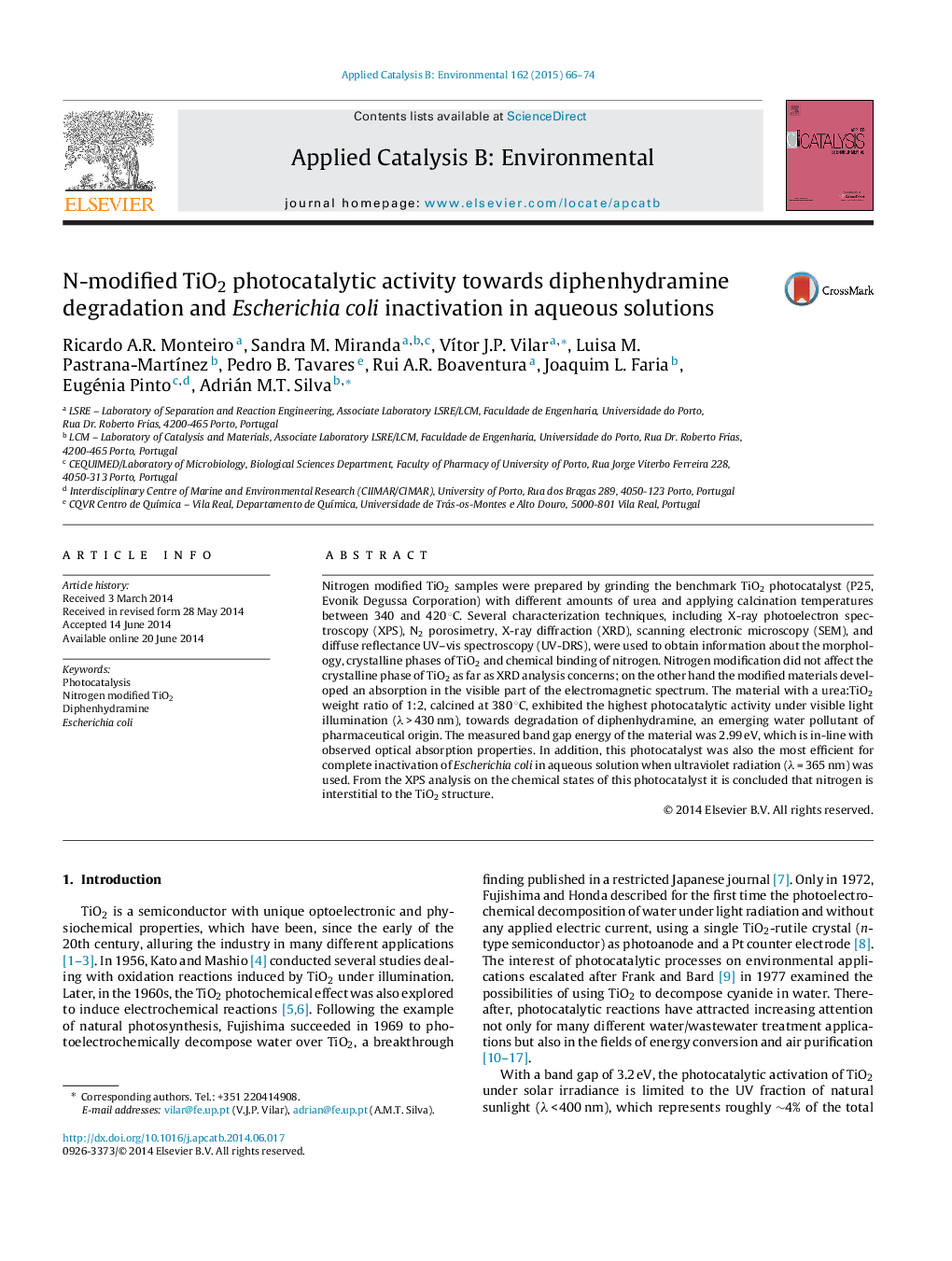| Article ID | Journal | Published Year | Pages | File Type |
|---|---|---|---|---|
| 45622 | Applied Catalysis B: Environmental | 2015 | 9 Pages |
•Nitrogen modified TiO2 photocatalysts prepared by grinding P25 with urea.•Photocatalytic activity depends on nitrogen content and calcination temperature.•Nitrogen modified P25 is photocatalytically active under visible illumination.•Diphenhydramine pharmaceutical water pollutant undergoes efficient degradation.•Nitrogen modification enhances TiO2 efficiency for Escherichia coli inactivation.
Nitrogen modified TiO2 samples were prepared by grinding the benchmark TiO2 photocatalyst (P25, Evonik Degussa Corporation) with different amounts of urea and applying calcination temperatures between 340 and 420 °C. Several characterization techniques, including X-ray photoelectron spectroscopy (XPS), N2 porosimetry, X-ray diffraction (XRD), scanning electronic microscopy (SEM), and diffuse reflectance UV–vis spectroscopy (UV-DRS), were used to obtain information about the morphology, crystalline phases of TiO2 and chemical binding of nitrogen. Nitrogen modification did not affect the crystalline phase of TiO2 as far as XRD analysis concerns; on the other hand the modified materials developed an absorption in the visible part of the electromagnetic spectrum. The material with a urea:TiO2 weight ratio of 1:2, calcined at 380 °C, exhibited the highest photocatalytic activity under visible light illumination (λ > 430 nm), towards degradation of diphenhydramine, an emerging water pollutant of pharmaceutical origin. The measured band gap energy of the material was 2.99 eV, which is in-line with observed optical absorption properties. In addition, this photocatalyst was also the most efficient for complete inactivation of Escherichia coli in aqueous solution when ultraviolet radiation (λ = 365 nm) was used. From the XPS analysis on the chemical states of this photocatalyst it is concluded that nitrogen is interstitial to the TiO2 structure.
Graphical abstractFigure optionsDownload full-size imageDownload as PowerPoint slide
